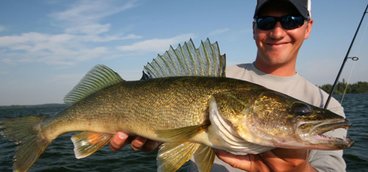
What's the relationship between walleyes and zebra mussels? It's complicated
FERGUS FALLS, Minn. — Zebra mussels first invaded Minnesota lakes three decades ago, causing biologists and anglers to sound the alarm on the damage they could do to the state's fisheries. The thumbnail-sized creatures filter food particles out of the water, upsetting a lake's food chain and starkly increasing water clarity.
With walleye angling being a major recreational pursuit as well as the driver of a multi-billion dollar industry, the worry was that a collapse of the state's most popular fish would damage to an important piece of Minnesota.
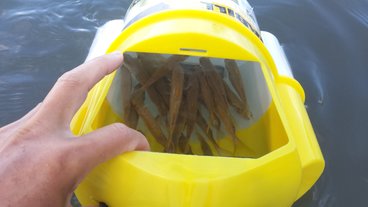
Dump those minnow buckets where they belong
Although it's illegal, too many anglers still release their leftover bait into lakes and rivers. The frequency of this behavior is concerning as it carries the risk of introducing fish pathogens to popular fishing waters.
Yet it continues to happen.
About 20 percent of anglers responding to a survey by the Minnesota Aquatic Invasive Species Research Center at the University of Minnesota owned up to the practice, saying they did so on some of their fishing trips.
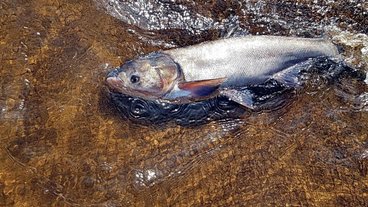
What are you carping about?
Would you eat green carp and ham? Would you eat it in a Dodge Ram? Or in an ice house or on an ice dam?
When European settlers immigrated to the United States during the 1600s, 1700s and 1800s, they brought along seeds for crops, chickens to lay eggs, and an assortment of animals to ensure that they would have plenty to eat in their new homeland. Some of these imports – wheat and cows for example – remain staples of our modern American food system.
Others have fallen out of favor and are now considered pests. Such is the fate of dandelions and common carp.
Common carp, which are native to Europe and Asia, were introduced to lakes in the Midwest as a game fish during the 1880s. Unfortunately, the fish proved to be a highly damaging aquatic invasive species, especially in shallow lakes and wetlands.
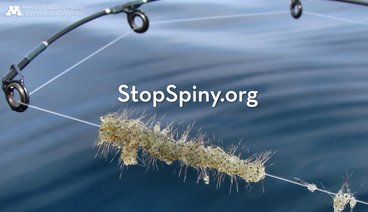
The Spiny Water Flea Could Wreak Havoc on the Most Pristine Waters in the Upper Midwest.
It seems that the next troublesome invasive species in the Upper Midwest is a tiny one. The spiny water flea has been latching onto fishing equipment, traveling the Great Lakes for decades, but now they are being transported to some of the most pristine waters in the Upper Midwest. The spiny water flea is about half an inch long. It’s a creepy little critter, with a single, distinctive black eyespot at the head of one to four spines. A barbed tail juts out of its backside, making up about 70 percent of its length. The translucent hitchhiker hooks onto watercraft, fishing lines—essentially everything and anything that touches the water—and then gets transported to new waters.
Corn, conveyor belts and a virus show promise in removing invasive carp from Minnesota waters
Corn. Herpes. An underwater conveyor belt. The most promising weapons against one of the most invasive and destructive fish in the United States are not exactly traditional.
Over the past decade, researchers at the University of Minnesota have tested a number of strange ideas to find a method to eradicate or at least cut down the number of common carp that have taken over and changed the makeup of lakes and wetlands throughout the state.
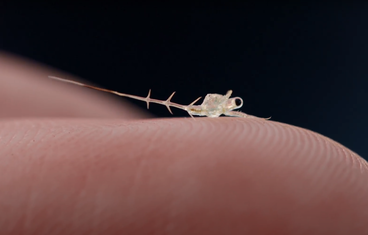
Green Visions: What does it want? "Indefinite persistance." How can we stop it? Swedish dish cloths.
Behold the spiny water flea: a single black eye, a barbed tail, and it reproduces asexually. Small fish, like young walleyes and yellow perch, can't eat it because of the spiny tail.
Then to add insult to injury, it turns around and eats the very things those same young fish eat - and out-competes them - leading to slower-growing bigger fish. Plus it's decimating populations of the zooplankton that help keep algae in check and lake systems in balance.
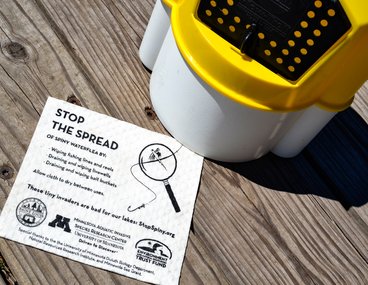
This ferocious water flea is mauling the Great Lakes
DULUTH, MINNESOTAOn a mild September morning on the aft deck of the research vessel Blue Heron, Donn Branstrator sniffed the contents of a sampling bottle that some graduate students had just hauled up from the depths of Lake Superior. “That’s why fish smell the way they do,” said Branstrator, an ecologist at the University of Minnesota in Duluth. The fishy odor came from planktonic crustaceans just a few millimeters long, a primary food source for all the fish in the lake.
The most important are Daphnia—a genus that comprises some 100 freshwater species. These tiny animals are critical to lake health: Besides providing food for fish, they graze on floating algae, beating their legs constantly to create microcurrents that pull the algae toward their miniature maws. By keeping algae in check, Daphnia help keep the system in balance.
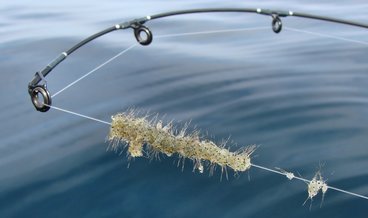
Invasive Spiny Water Flea Disrupting Food Chain In the Great Lakes
The National Geographic reported that a crustacean is invading the lakes and eating planktons which leave small fishes nothing to feed on. This species is called the Bythotrephes longimanus or also known as the spiny water leaf which measures half an inch, making it a titan in the world of phytoplanktons.
Spiny water flea has a single black eyespot, mandibles, and a prominent tail that is 70% of its entire length. They are commonly found in Lake Ladoga, near the Baltic Sea in Russia.
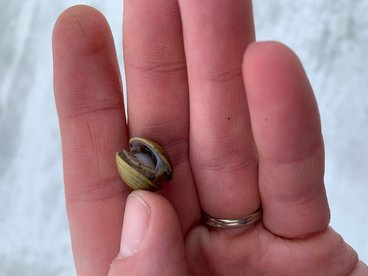
12-year-old discovers invasive clams in Minnesota lake
A budding young scientist made an unusual discovery in a Sherburne County lake last summer.
Twelve-year-old William Guthrie of Big Lake, Minn., was volunteering with his family to comb lakes for aquatic invaders when he discovered a golden clam — an invasive species not previously found in Minnesota lakes — in Briggs Lake, southeast of St. Cloud.
Experts with the Minnesota Department of Natural Resources confirmed the discovery, said Megan Weber, an educator with the University of Minnesota Extension and Minnesota Aquatic Invasive Species Research Center.
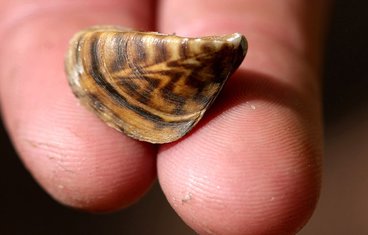
Intensifying hurricanes are helping invasive species spread across the U.S.
With record-breaking intensity, the 2020 Atlantic hurricane season has surged past the average 12 named storms per year. When Hurricane Zeta made landfall in Mexico on October 26, it became the 27th named storm of the season and 11th named hurricane.
While hurricanes are notorious for producing tornados and causing widespread destruction, they have another devastating, yet lesser-known effect: Spreading invasive species to new habitats. (Here’s how hurricanes form—and why they’re so destructive.)
